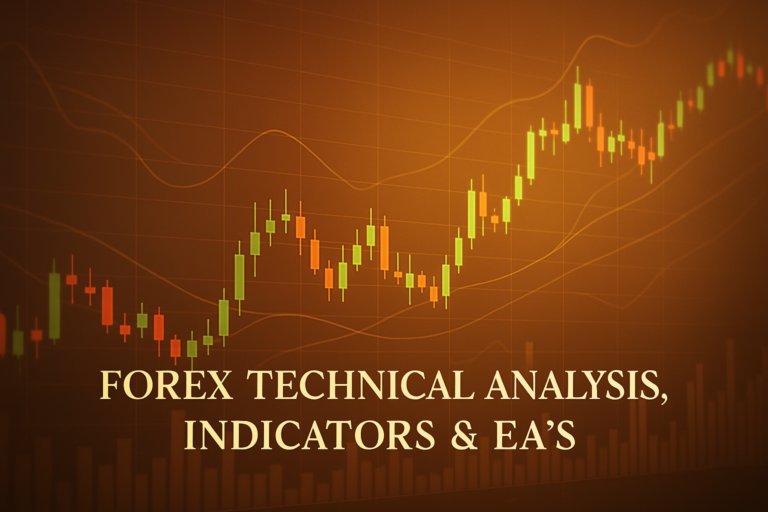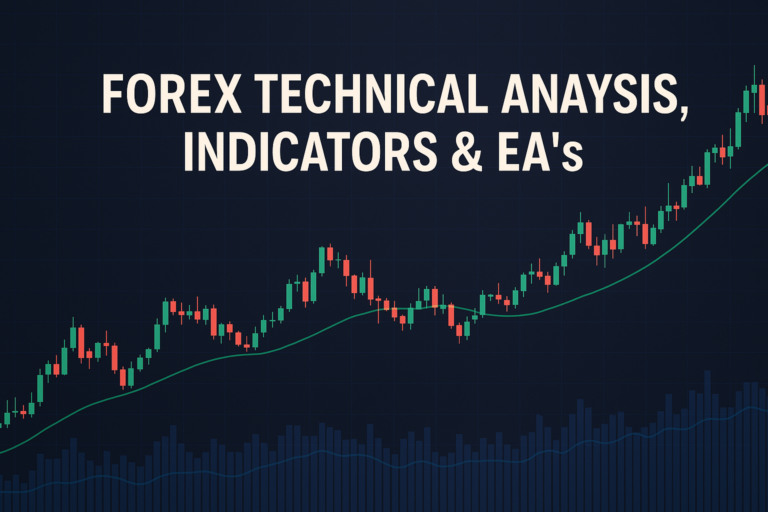
Forex technical analysis is essential for predicting market movements and improving trading success.
In the world of Forex trading, understanding forex technical analysis is crucial. It’s like having a map when you’re on a treasure hunt. This analysis helps traders see patterns and trends in market data. But many traders, both beginners and professionals, often find it challenging. They get lost in charts, indicators, and countless numbers, feeling overwhelmed.
This confusion can lead to mistakes, causing traders to miss opportunities or make poor decisions. That’s why understanding forex technical analysis is not just important; it’s essential. By grasping its concepts and applying them correctly, traders can significantly improve their chances of success.
Understanding the Forex Technical Analysis
Forex technical analysis involves studying price movements and trading volumes to predict future market behavior. The issue arises when traders misinterpret data or ignore market sentiments. For instance, a trader might see a strong uptrend in a currency pair and jump in without considering other factors like economic news or geopolitical events. This can lead to unexpected losses.
Sometimes, sudden market shifts occur due to external factors. Let’s say a country’s central bank announces a rate hike unexpectedly. Traders relying solely on past price trends might be caught off guard, leading to significant losses. In these moments, understanding forex technical analysis can provide clarity and direction.
Pros and Cons of Forex Technical Analysis
When it comes to forex technical analysis, there are both advantages and drawbacks. Let’s break them down:
Pros:
- Identifying Trends: Traders can spot upward or downward trends, helping them make informed decisions.
- Timing Entries and Exits: Good analysis helps traders know when to buy or sell.
- Risk Management: It allows traders to set stop-loss orders based on technical levels.
Cons:
- False Signals: Sometimes, indicators give misleading signals, causing losses.
- Over-reliance: Traders may ignore fundamental analysis, which can lead to bad decisions.
- Learning Curve: Mastering technical analysis takes time and practice.
To mitigate these problems, traders can follow these steps:
- Keep Learning: Continuous education on technical indicators and market conditions is vital.
- Use Multiple Indicators: Combining several tools can lead to more accurate predictions.
- Practice with a Demo Account: This allows traders to test strategies without risking real money.
For advanced traders, here are some pro tips:
- Stay Updated: Always be aware of economic news and events that could impact the currency market.
- Review Past Trades: Analyze previous trades to learn from mistakes and successes.
Frequently Asked Questions
1. What is Forex Technical Analysis?
Forex technical analysis is a method of evaluating currency pairs based on historical price movements and trading volumes. Traders use charts, patterns, and indicators to forecast future price movements.
2. How Can I Improve My Technical Analysis Skills?
Improving technical analysis skills requires practice. Start by using demo accounts to test different strategies. Study various indicators and how they react to market conditions. Books, online courses, and webinars can also be beneficial.
3. What Are Common Mistakes in Forex Technical Analysis?
Common mistakes include over-reliance on one indicator, neglecting fundamental analysis, and not considering market news. These can lead to poor trading decisions and losses.
4. How Do I Choose the Right Indicators?
The right indicators depend on your trading style. For day traders, momentum indicators like the RSI or MACD can be helpful. Swing traders might prefer trend-following indicators like moving averages.
5. Can I Rely Solely on Technical Analysis?
While technical analysis is powerful, it’s best not to rely solely on it. Combining it with fundamental analysis and understanding economic news can provide a clearer picture of market movements.
6. What Is a Stop-Loss Order?
A stop-loss order is a tool that automatically sells a currency pair when it reaches a certain price. It helps limit potential losses and is an important part of risk management.
7. How Often Should I Review My Technical Analysis?
Regularly reviewing your technical analysis is crucial. Daily or weekly reviews can help you stay updated on market trends and adjust your strategies accordingly.
Conclusion
In summary, understanding forex technical analysis is vital for successful trading. While it has its challenges, with practice and the right strategies, traders can manage these issues effectively. Stay informed, and always seek to improve your trading strategies for better results.
User Engagement & Encouragement Stay curious and keep learning about forex technical analysis! Every bit of knowledge brings you one step closer to becoming a successful trader.
Recommended Next Steps
To dive deeper into forex technical analysis, consider the following steps:
- Enroll in an online course dedicated to technical analysis.
- Join trading forums to share experiences and insights.
- Read books that focus on both technical and fundamental analysis.
- Experiment with different trading strategies using a demo account.
For more insights into forex trading, check out Investopedia and FXStreet.
Expand Your Knowledge
- 📌 Forex Trading Learning Road Map
- 📌 Forex Trading Course with no Fees
- 📌 Forex Trading Issues, Problems, and Solutions
- 📌 Forex Daily Forecast & Live Updates
- 📌 Forex Fundamental & News Analysis: Tomorrow’s Market Movers & Trade Opportunities
- 📌 Forex Education Hub: Learn & Profit
- 📌 Forex Technical Analysis, Indicators & EA’s
Start Trading Today
Ready to take your forex trading to the next level? Open an account with Exness, one of the most trusted platforms in the industry. 👉 Sign Up Now and start trading with confidence!
Exness stands out with ultra-low spreads for mini traders, instant withdrawals, and zero spread accounts for pro traders. Trusted since 2008, Exness offers lightning-fast execution, no hidden fees, and a secure, transparent trading environment—giving you the edge you need to succeed. 🚀 Join now and trade smarter!
Watch this helpful video to better understand forex technical analysis:
Note: The video above is embedded from YouTube and is the property of its original creator. We do not own or take responsibility for the content or opinions expressed in the video.
In this video, the speaker shares their journey of mastering Forex trading over the last five years, emphasizing the importance of reading charts to predict market movements. A chart is a fundamental tool used to visualize the price movements of various financial assets, including currencies, stocks, and cryptocurrencies. The primary goal of analyzing charts is to identify the market’s direction, allowing traders to anticipate whether prices will rise (bullish) or fall (bearish). To make money in trading, one must be willing to take risks, and the speaker outlines two primary approaches for determining market direction: fundamental analysis and technical analysis. Fundamental analysis relies on economic data and news, while technical analysis focuses on chart patterns and historical price movements.
The speaker explains that understanding market trends is crucial for success. A bullish market is characterized by higher highs and higher lows, while a bearish market shows lower highs and lower lows. Key areas where traders should consider entering a trade include support and resistance levels. Support acts as a floor where prices bounce back up, while resistance serves as a ceiling where prices tend to reverse downward. Additionally, the speaker discusses candlestick patterns, which help traders interpret market behavior in real-time. Patterns like head and shoulders or double bottoms provide indications of potential market reversals. By integrating these concepts—recognizing market trends, identifying support and resistance levels, and applying candlestick patterns—traders can make informed decisions and execute successful trades. The speaker encourages viewers to practice these strategies and invites them to explore a more detailed approach to trading through their “set and forget” strategy, which has reportedly helped many students achieve consistent profits.





